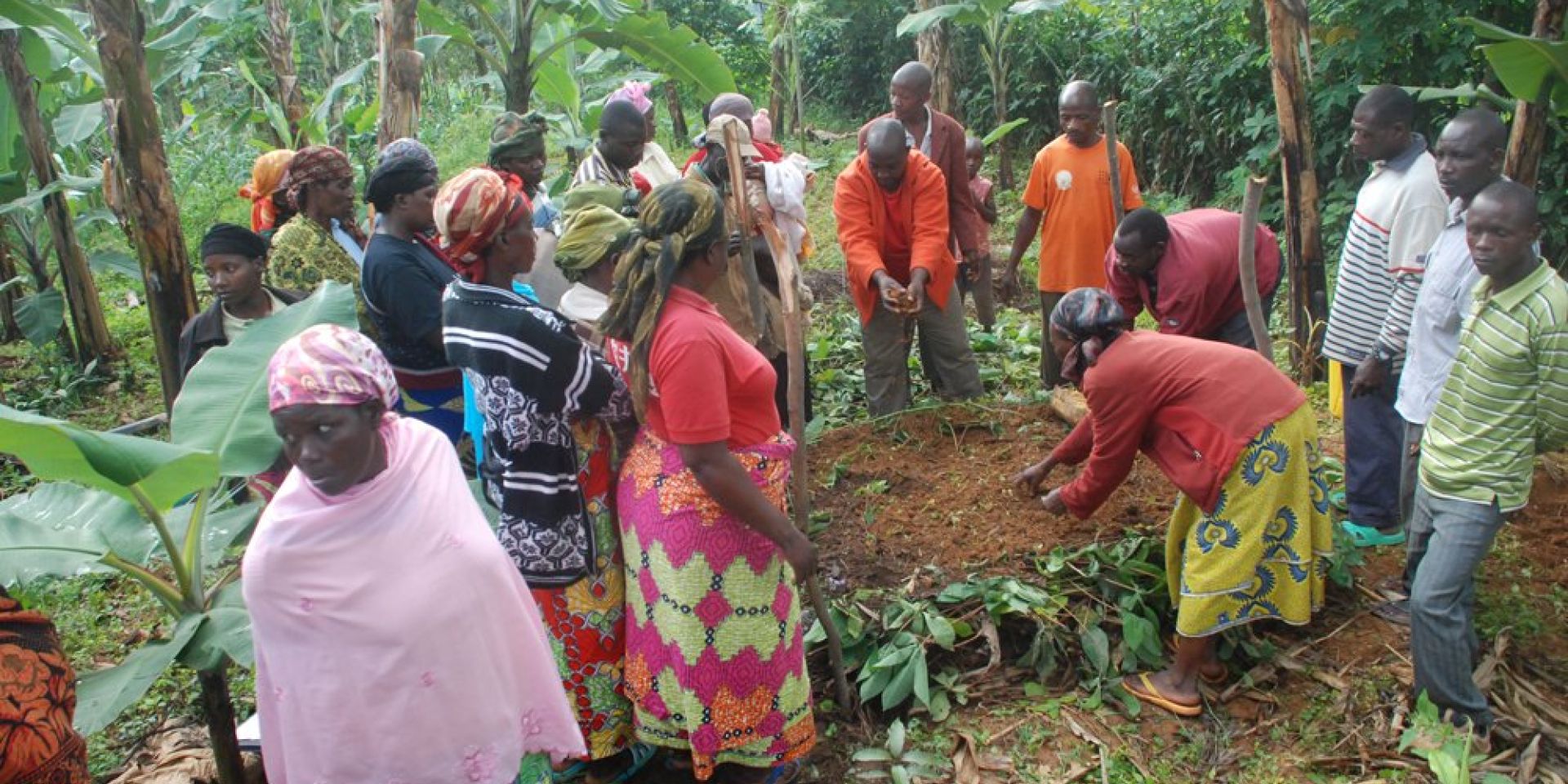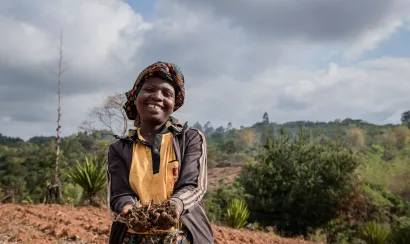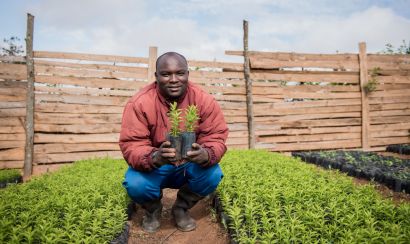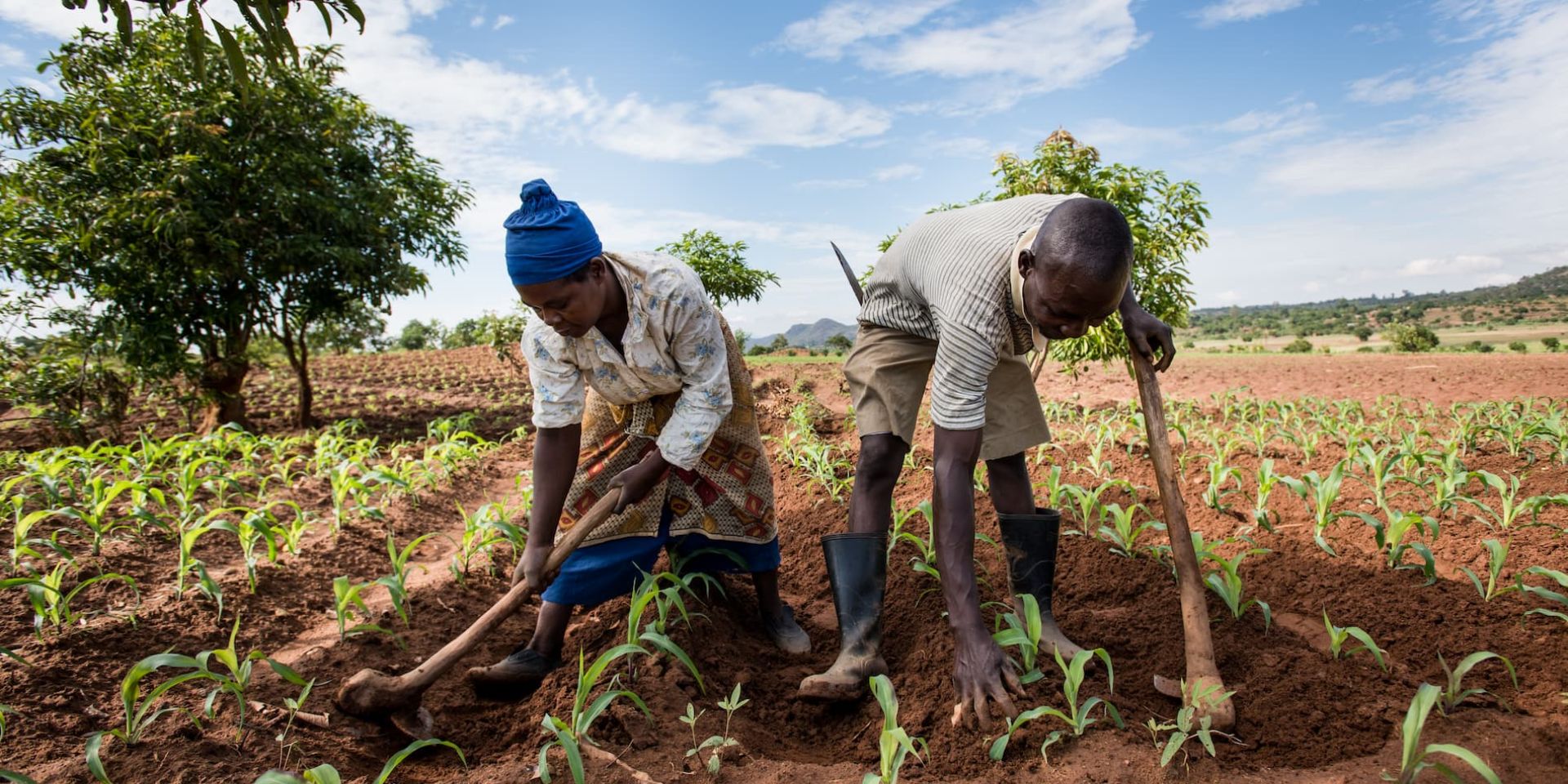Why One Acre Fund Trains Farmers in Composting
Improving Our Client's Soil
One Acre Fund is sharply focused on our program’s long-term impact on soil. We are dedicated to making sure that at a minimum, the methods we teach don’t degrade farmers’ fields over time, and whenever possible improve the health of the soil they depend upon to make their living.
One way we help farmers improve their soil is through composting trainings, which we offer in Kenya, Rwanda, and Burundi. By creating their own compost and then using it during planting, farmers are able to return much-needed nutrients to their fields. This enriches the soil and results in improved yields.
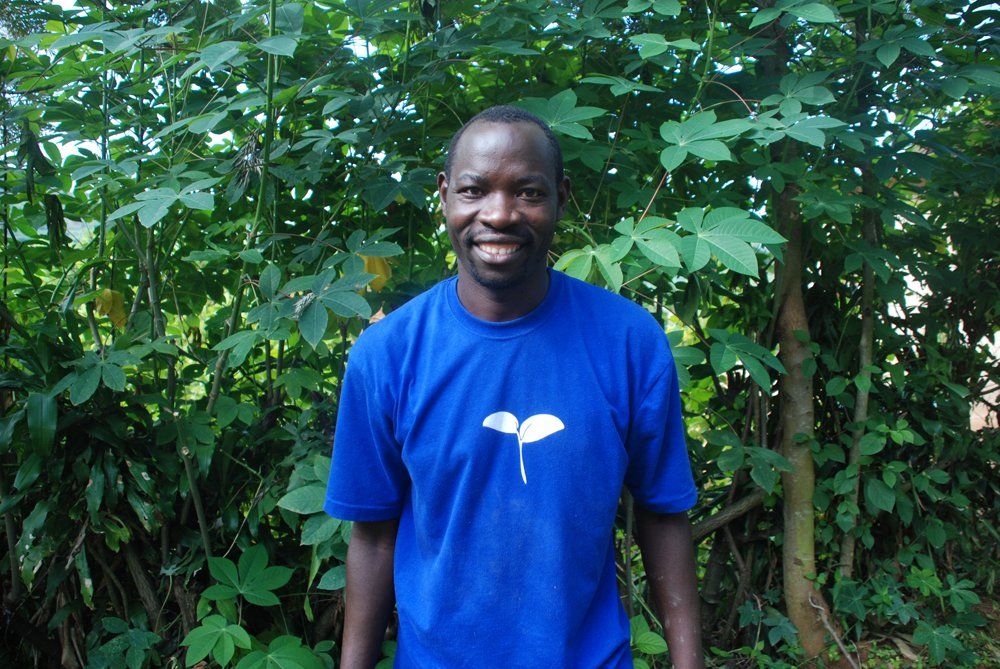
Compost Trainings
In Rwanda, the field team just completed a series of composting trainings. We asked Rwanda field manager Eric Nyiruburanga to explain exactly how we teach farmers to create and use compost. Eric worked as a One Acre Fund field officer for five years before being promoted this year to field manager. Before working with One Acre Fund, he farmed with us too!
Eric, before we dive into the compost trainings, would you tell us what your favorite part of your job is?
Training farmers is the most important thing I do. Every farmer I work with has the chance to improve his or her harvests by following the methods I teach them. That’s why I enjoy trainings and put a lot of effort into delivering them well. If my trainings are done well, then more farmers will be able to realize their harvest potential.
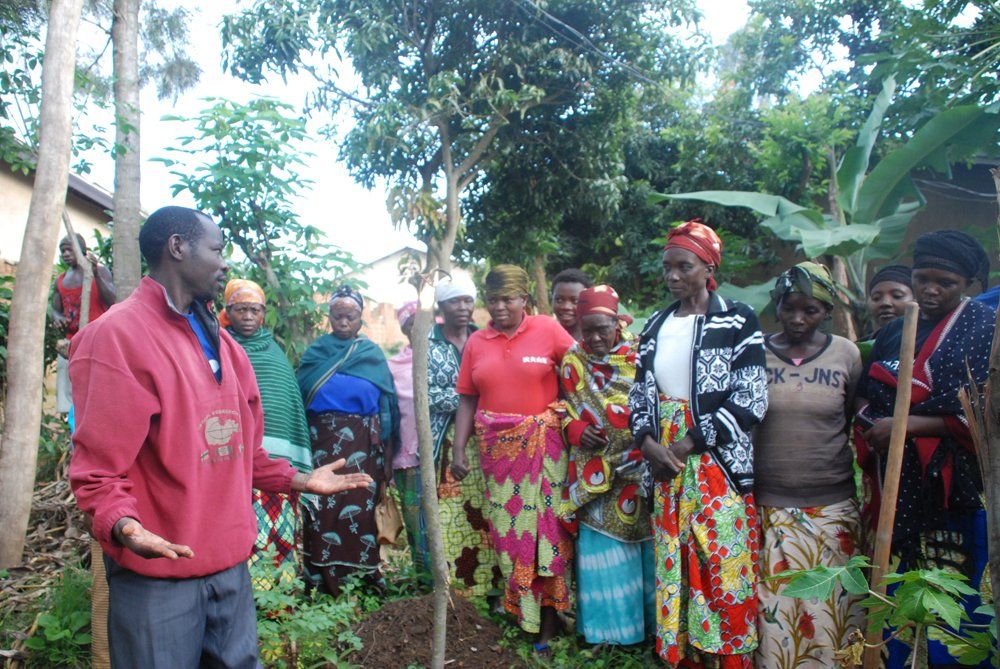
Why do you think the trainings you give on making compost are so valuable to farmers?
At One Acre Fund, we always encourage farmers to both micro-dose fertilizer and use organic compost. This way they can make their soil productive while still keeping it healthy. Some farmers do not have livestock, so they don’t have manure to use while farming. The organic compost that we teach farmers to make is a good alternative because all the materials, such as ash, grasses, and soil, are easy for everyone to find.
How do farmers feel about the compost mixture?
They like it! The farmers I work with are used to having to buy manure from neighbors for their fields. Now they don’t need to buy manure and can save the money to use for other needs. When the farmers know it is the compost training day, they make sure not to miss the training. If they are not available that day, they send their children because they know how important compost is.
Can you tell us the basics of how you make compost?
Making compost doesn’t require money. All of the ingredients – ash, fresh and dried grasses, animal waste, soil, and water – are available at almost every farmer’s home. After they compile the ingredients, I teach them the techniques of stacking and combining them. First you have to prepare a space in the ground. You can dig a hole or prepare the surface. Then you lay small sticks on the ground.
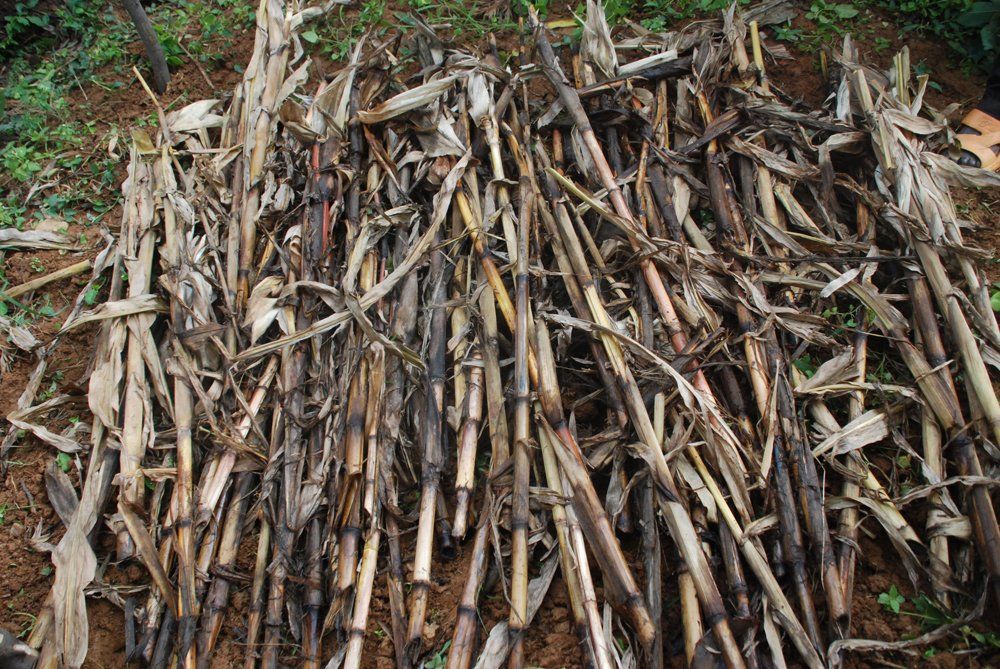
The next step is to begin stacking the materials: first are dried grasses, second are fresh grasses, third is manure, fourth is soil, and fifth is ash, and then animal urine and water. That completes one layer— compost can be made of more than one layer of the same materials if you like.
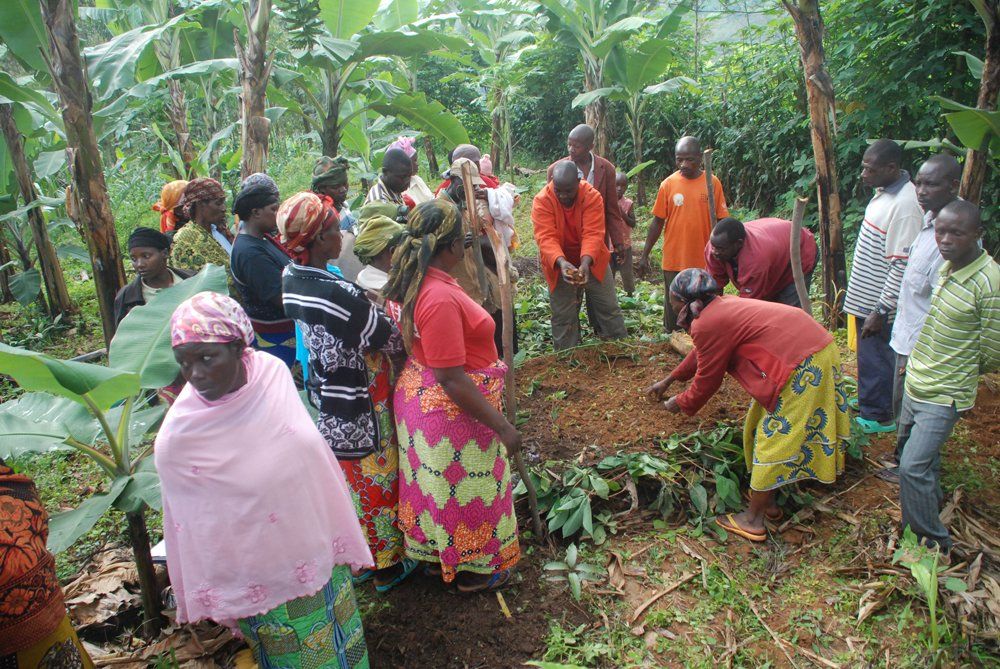
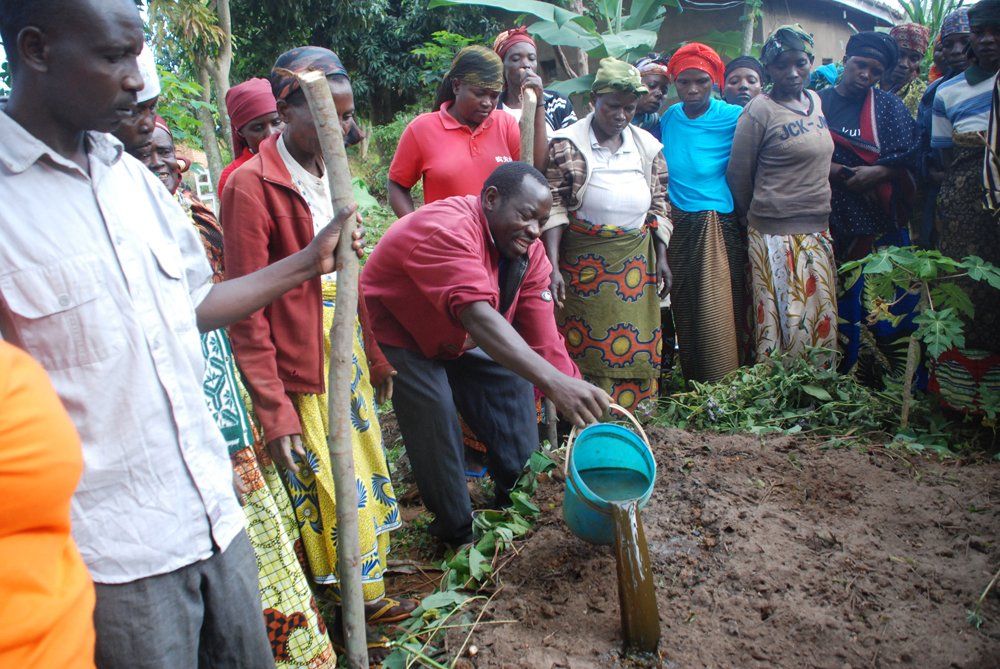
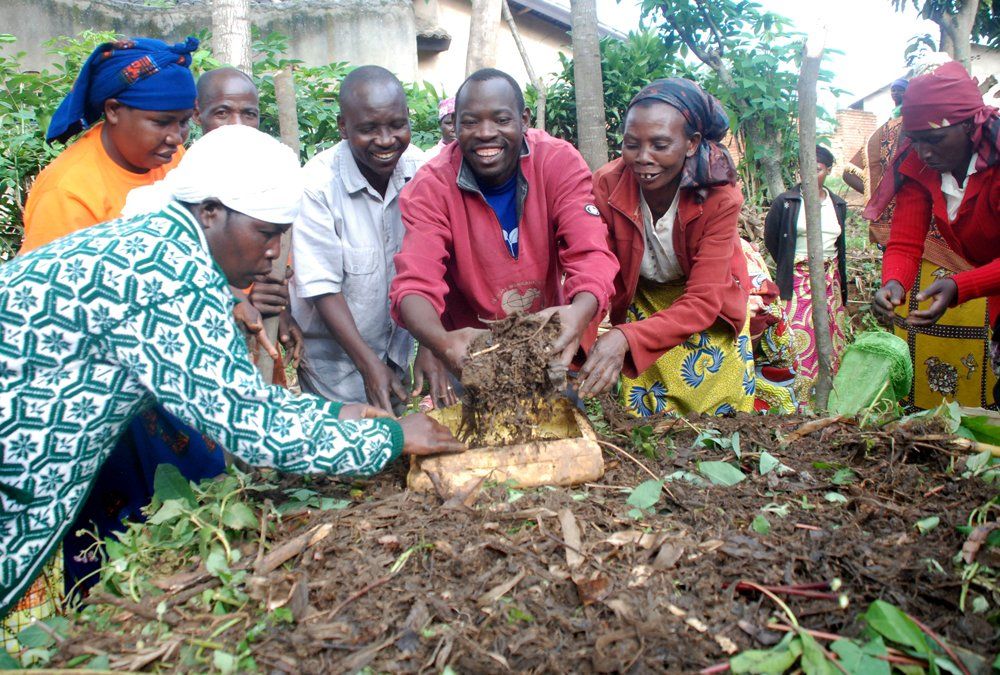
When you have finished with the layers, you put a small stick in the center, which will help show if the compost pile is decaying. If the stick is warm when you check it, it means the pile is decaying. If it is cold, the pile is not decaying, so you need to stir the pile.
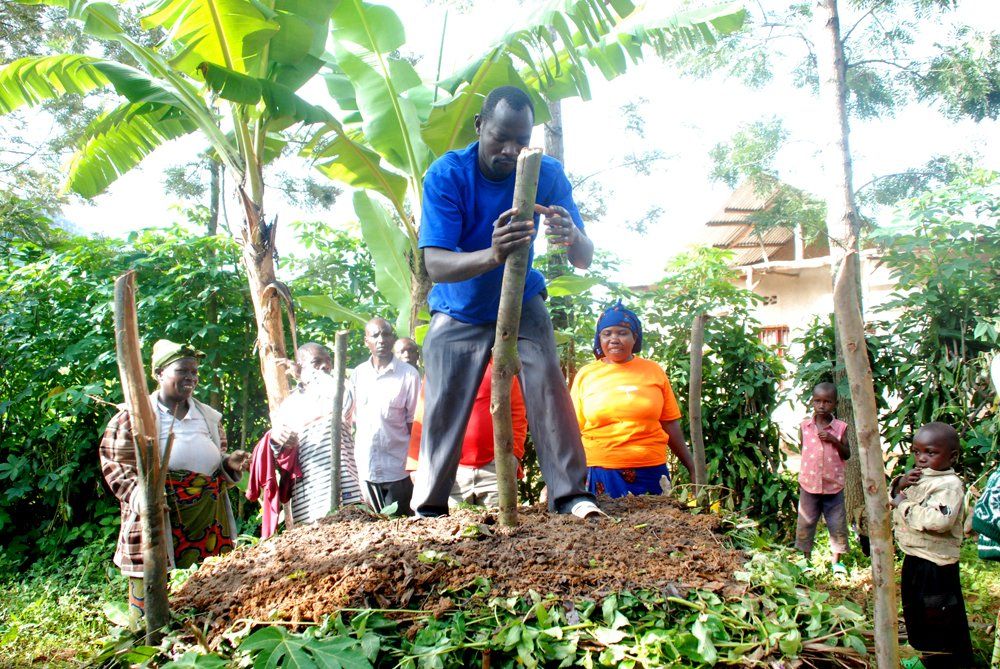
The final step is to cover the compost pile with bananas leaves or other grasses.
So after the compost is ready, how do farmers apply it to their fields?
I always recommend farmers make the compost near their fields so it won’t be a challenge to transport it when the compost is ready. The application of the compost is not much different from animal manure application- I recommend use two hands, and dump the compost into a hole to about one meter if they are planting in furrows. However, you can use more than that quantity if you have much compost to satisfy the whole field.
The compost is applied to all crops and can be used for every season. I mostly encourage farmers to use the compost in season B. Here in Rwanda, season B doesn't provide much rain, so the wet compost helps prevent crops from being damaged by the sun.
Compost trainings are just part of One Acre Fund’s efforts not only to improve farmers’ yields within a single season, but to ensure healthy soils and bountiful harvests for years to come. Read more about our big plans for measuring our long term impact.
